St Louis, Missouri Blood Testing Facilities
 Represents a LabCorp blood testing facility
Represents a LabCorp blood testing facility Represents a Quest Diagnostics blood testing facility
Represents a Quest Diagnostics blood testing facility
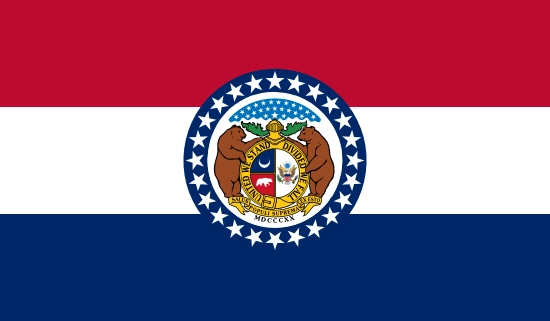
Nearby Labcorp Blood Testing facilities:
- Labcorp Center Distance: 2 m, 3960 Lindell Blvd, Saint Louis, Other, MO, 63108
- Labcorp Center Distance: 5 m, 6555 Chippewa St Ste 100, Saint Louis, Other, MO, 63109
- Labcorp Center Distance: 11 m, 816 S Kirkwood Rd Ste 110, Saint Louis, St Louis County, MO, 63122
- Labcorp Center Distance: 12 m, 12345 W Bend Dr, Saint Louis, St Louis County, MO, 63128
- Labcorp Center Distance: 13 m, 637 Dunn Rd Ste 100A, Hazelwood, St Louis County, MO, 63042
- Labcorp Center Distance: 14 m, 12685 Dorsett Rd Suite A, Maryland Heights, St Louis County, MO, 63043
- Labcorp Center Distance: 15 m, 2023 Vadalebene Dr Suite 150, Maryville, Madison County, IL, 62062
- Labcorp Center Distance: 16 m, 102 Rottingham Ste 2, Edwardsville, Madison County, IL, 62025
- Labcorp Center Distance: 17 m, 3613 Richardson Square Ste 300, Arnold, Jefferson County, MO, 63010
- Labcorp Center Distance: 18 m, 711 Veterans Memorial Parkway, Saint Charles, St Charles County, MO, 63303
- Labcorp Center Distance: 19 m, 15421 Clayton Rd Ste 301, Ballwin, St Louis County, MO, 63011
- Labcorp Center Distance: 20 m, 509 Hamacher Ste 200B, Waterloo, Monroe County, IL, 62298
- Labcorp Center Distance: 23 m, 205 First Executive Avenue, Saint Peters, St Charles County, MO, 63376
- Labcorp Center Distance: 25 m, 6994 Mexico Rd, Saint Peters, St Charles County, MO, 63376
- Labcorp Center Distance: 31 m, 1439 Us Highway 61 Ste B, Festus, Jefferson County, MO, 63028
- Labcorp Center Distance: 32 m, 1002 Peruque Crossing Ct 100, O'fallon, St Charles County, MO, 63366
- Labcorp Center Distance: 38 m, 801 Medical Dr Ste 200, Wentzville, St Charles County, MO, 63385
- Labcorp Center Distance: 46 m, 160 Professional Parkway, Troy, Lincoln County, MO, 63379
- Labcorp Center Distance: 57 m, 300 Health Way, Potosi, Washington County, MO, 63664
- Labcorp Center Distance: 58 m, 206 East Third St, Centralia, Marion County, IL, 62801
- Labcorp Center Distance: 72 m, 4114 N Water Tower Pl Ste D, Mount Vernon, Jefferson County, IL, 62864
- Labcorp Center Distance: 98 m, 62 Doctors' Park Suite B, Cape Girardeau, Cape Girardeau County, MO, 63703
Nearby Quest Blood Testing facilities:
- Quest Center Distance: 3 m, 40 N Kingshighway, Saint Louis, Other, MO, 63108-1324
- Quest Center Distance: 11 m, 3030 Frank Scott Pkwy W, Belleville, St Clair County, IL, 62223-5014
- Quest Center Distance: 12 m, 9950 Kennerly Rd, Saint Louis, St Louis County, MO, 63128-2704
- Quest Center Distance: 13 m, 8186 N Lindbergh Blvd, Florissant, St Louis County, MO, 63031-7135
- Quest Center Distance: 14 m, 3440 Depaul Ln, Bridgeton, St Louis County, MO, 63044-2531
- Quest Center Distance: 15 m, 2136 Vadalabene Dr, Maryville, Madison County, IL, 62062-5632
- Quest Center Distance: 20 m, 237B E Center Dr, Alton, Madison County, IL, 62002-5931
- Quest Center Distance: 21 m, 17300 N Outer 40, Chesterfield, St Louis County, MO, 63005-1361
- Quest Center Distance: 22 m, 4101 Mexico Rd, Saint Peters, St Charles County, MO, 63376-6414
- Quest Center Distance: 24 m, 98 The Legends Pkwy, Eureka, St Louis County, MO, 63025-3802
- Quest Center Distance: 31 m, 1463 Us Highway 61, Festus, Jefferson County, MO, 63028-4109
- Quest Center Distance: 34 m, 704 S Hackman St, Staunton, Macoupin County, IL, 62088-1630
- Quest Center Distance: 37 m, 1201 Wentzville Pkwy, Wentzville, St Charles County, MO, 63385-3498
- Quest Center Distance: 42 m, 2003 Phoenix Center Dr, Washington, Franklin County, MO, 63090-5544
- Quest Center Distance: 59 m, 539 W Karsch Blvd, Farmington, St Francois County, MO, 63640-3312
- Quest Center Distance: 71 m, 4 Cusumano Professional Plaza Dr, Mount Vernon, Jefferson County, IL, 62864-6736
- Quest Center Distance: 82 m, 3119 Robbins Rd, Springfield, Sangamon County, IL, 62704-6553
- Quest Center Distance: 96 m, 1220 E State Route 72, Rolla, Phelps County, MO, 65401-3938
Saint Louis Hormone Replacement Therapy Services
There are few things that degrade health more acutely than Hormone Imbalance and Deficiency. Hormones are the way that our cells and systems interact with one another and function as a distinct group, and in order for the human body to operate as a well-oiled machine, it must release the right amount of the right hormones at the right times. There are many forms of Hormone Imbalance that become more likely with age, including HGH Deficiency and Low-T.
The Conscious Evolution Institute is an Online Hormone Clinic which has streamlined the logistical process of Hormone Deficiency diagnosis and treatment, in order to provide our patients with cost-effective care that meets the demands and healthcare needs of the patient. We are happy to serve the St. Louis metropolitan area, as well as the entire state of Missouri. If you feel that you may be a candidate for St. Louis Hormone Treatments, we urge you to make the phone call to talk to one of our specialists, or fill out the contact form to the right in order to set up a no-obligation, no-cost consultation!
Saint Louis Testosterone Treatments for Erectile Dysfunction and Low-T
Testosterone is the epitome of masculinity. Without Testosterone, men wouldn't even be possible! Andropause is an age-related medical disorder that starts to become problematic for many patients in the forties and fifties, but Low-T can occur at any age, as a result of a wide variety of health factors, including genetics, activity level, and weight. Low-T is a well-documented medical affliction that affects men in the United States to the tune of millions, and there are thousands of men in the St. Louis area that can potentially benefit from Testosterone Therapy.
Testosterone Deficiency is most easily recognized by its sexual characteristics, notably a reduced ability to perform in the bedroom combined with a lack of romantic intimacy. These are the most direct and visible symptoms, but the condition also leads to other issues, such as increased blood pressure, poor cholesterol, weight gain, lack of energy, anxiety, lack of confidence, trouble sleeping, and loss of strength. With St. Louis Low-T Treatments with Patches, Injections, and Creams, it is possible to restore healthy Testosterone Levels and encourage an improved health profile.
Saint Louis HGH Therapy for Hormone Imbalance and Growth Hormone Deficiency
Human Growth Hormone is a highly potent metabolic hormone that is responsible for signalling to the individual cells of the body that it's time to get to work! HGH is responsible for keeping the body's engine rolling on all cylinders, and helping the body keep up with the demanding needs of its individual systems. Around the age of thirty or so, HGH levels fall into a neverending state of decline. This decline is slow, but over time, the results of that decline can be very dramatic.
HGH Deficiency leads to many health issues as it becomes more severe. Patients gain weight while simultaneously losing strength. They experience fatigue and have less capacity for aerobic activity. Growth Hormone Deficiency also leads to issues with healing, immune health, heart health, and cognitive function. St. Louis Bio-Identical Human Growth Hormone Treatments can help stave off the effects of Hormone Decline and promote optimized health and wellness. We can deliver quality HGH HRT Products and Treatments directly to your Missouri address, or anywhere in the United States.
Saint Louis Injectable Sermorelin Therapy for Adult HGH Deficiency
Along with our high-quality Growth Hormone Products, we also offer an alternative form of Growth Hormone Optimization known as Sermorelin Acetate. Sermorelin works by simulating the physiological effects of an HGH precursor hormone known as Growth Hormone-Releasing Hormone, or GH-RH. GH-RH is the hormone that tells your pituitary to make more HGH, and declining GH-RH levels are the primary root cause of Adult-Onset Growth Hormone Deficiency.
Unlike HGH Treatments, Sermorelin and GH-RH are fully regulated once they enter the blood stream, only used when the body deems it necessary, meaning that the body operates in its normal rhythm, with a lower risk of overdose or acclimation. Furthermore, Sermorelin both costs less per dose than Bio-Identical Human Growth Hormone and is available to a wider range of potential patients as a result of its availability for off-label treatment.
Saint Louis Weight Loss with the HCG Diet
If you are looking for a no-nonsense, clinically mediated Weight Loss Treatment, then you may be excited to learn about the benefits of HCG Injection Therapy. Our clinic offers quality St. Louis HCG Treatments to patients 30 and older who need to lose weight. Before trying risky lap band surgery or gastric bypass, ask a medical professional about whether HCG Injections are right for you. With a low calorie diet, combined with injectable HCG, patients have lost as much as thirty pounds per month without feeling excessively hungry or tired, while preserving healthy muscle mass in spite of rapid weight loss.
Saint Louis, Missouri Information
St. Louis is located on the eastern side of Missouri, and is located on the shore of the Mississippi River. St. Louis was first settled in the mid-18th century and quickly became an important trading post on the river. Today, St. Louis is an important port city for cargo flowing up and down to Mississippi River, especially cargo which travels inland from the Gulf of Mexico. St. Louis is home of one of the most recognizable landmarks in the United States—the Gateway Arch, which symbolizes the importance of St. Louis as a Gateway to the West. St. Louis is a major city when it comes to professional athletics, and is home to a few top-tier teams, including the Saint Louis Rams, the Saint Louis Blues, and the Saint Louis Cardinals.
The St. Louis economy is heavily driven by transportation and shipping, but there are many other economic areas which influence the economy, such as food service, manufacturing, finance, and healthcare. Major companies located in St. Louis include Ralcorp, Ameren, Peabody Energy, and Express Scripts. St. Louis represents a large metropolitan area, and suburbs of St. Louis include Mehlville, Kirkwood, Sunset Hills, Fenton, Valley Park, and Ballwin.
All About St Louis, Missouri Geographic Area
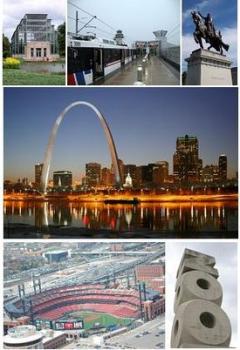
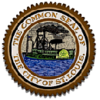
St. Louis /seɪnt ËnluËaɪs/ (French: Saint-Louis or St-Louis, [sÉoÌc lwi] ( listen)) is an independent city on the eastern border of Missouri, United States, and it is the second-largest city in the state. With a population of 318,069 in July 2011, it was the 58th-largest U.S. city at the 2010 U.S. Census. The Greater St. Louis combined statistical area (CSA) population of 2,882,932 is the 15th-largest in the country and is the largest in Missouri.
listen)) is an independent city on the eastern border of Missouri, United States, and it is the second-largest city in the state. With a population of 318,069 in July 2011, it was the 58th-largest U.S. city at the 2010 U.S. Census. The Greater St. Louis combined statistical area (CSA) population of 2,882,932 is the 15th-largest in the country and is the largest in Missouri.
The city of St. Louis was founded in 1764 by Pierre Laclede and Auguste Chouteau, and after the Louisiana Purchase, it became a major port on the Mississippi River. Its population expanded after the American Civil War, and it became the fourth-largest city in the United States in the late 19th century. It seceded from St. Louis County in March 1877, allowing it to become an independent city and limiting its political boundaries. In 1904, it hosted the 1904 World's Fair and the 1904 Olympic Games. The city's population peaked in 1950, then began a long decline that continues in the 21st century.
The economy of St. Louis relies on service, manufacturing, trade, transportation of goods, and tourism. The region is home to several major corporations: Express Scripts, Enterprise Rent-A-Car, Graybar Electric, Scottrade, Sigma-Aldrich, Anheuser-Busch, Edward Jones Investments, Emerson Electric, Energizer, and Monsanto. St. Louis is home to three professional sports teams: the St. Louis Cardinals, one of the most successful Major League Baseball clubs; the hockey St. Louis Blues, and the football St. Louis Rams. The city is commonly identified with the Gateway Arch, part of the Jefferson National Expansion Memorial in downtown St. Louis.
The area that would become St. Louis was a center of Native American Mississippian culture, which built numerous temple and residential earthwork mounds in the region, giving the city its early nickname, the "Mound City". European exploration of the area began in 1673, when French explorers Louis Jolliet and Jacques Marquette traveled through the Mississippi River valley. Five years later, La Salle claimed the region for France as part of French Louisiana. The earliest settlements in the area were built in Illinois Country (also known as Upper Louisiana) during the 1690s and early 1700s at Cahokia, Kaskaskia, and Fort de Chartres. Migrants from the eastern French villages founded Ste. Genevieve, Missouri, across the Mississippi River from Kaskaskia, and in early 1764, Pierre Laclede and his stepson Auguste Chouteau founded the city of St. Louis.
From 1764 to 1803 European control of the area west of the Mississippi to the northernmost part of the Missouri River basin, called Louisiana, was assumed by the Spanish as part of the Viceroyalty of New Spain. In 1780, St. Louis was attacked by British forces, mostly Native Americans, during the American Revolutionary War. St. Louis was transferred back to France in 1800, then sold to the United States in 1803 as part of the Louisiana Purchase, and the city became the territorial capital. Shortly after the purchase, the Lewis and Clark Expedition left St. Louis in May 1804, reaching the Pacific Ocean in summer 1805, and returning on September 23, 1806. Both Lewis and Clark lived in St. Louis after the expedition. Many other explorers, settlers, and trappers (such as Ashley's Hundred) would later take a similar route to the West. The city elected its first municipal legislators (called trustees) in 1808.
Steamboats first arrived in St. Louis in 1818, improving connections with New Orleans and eastern markets. Missouri became a state in 1821, at which point the capital moved from St. Louis. However, St. Louis was incorporated as a city in 1822, and continued to see growth due to its port connections. Immigrants from Ireland and Germany arrived in St. Louis in significant numbers starting in the 1840s, and the population of St. Louis grew from less than 20,000 in 1840, to 77,860 in 1850, to more than 160,000 by 1860.
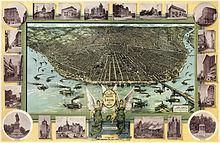
During the American Civil War, St. Louis was the site of significant divisions, although no combat took place in the city after the 1861 Camp Jackson Affair. The war hurt St. Louis economically, due to the blockade of river traffic to the South, although the St. Louis Arsenal constructed ironclads for the Union. St. Louis profited via trade with the West after the war, and in 1874, the city completed the Eads Bridge, the first bridge over the Mississippi River in the area. On August 22, 1876, the city of St. Louis voted to secede from St. Louis County and become an independent city, and industrial production continued to increase during the late 19th century. The city also produced a number of notable people in the fields of literature, including Tennessee Williams and T. S. Eliot, and major corporations such as the Anheuser-Busch brewery and Ralston-Purina company were established. St. Louis also was home to Desloge Consolidated Lead Company and several brass era automobile companies, including the Success Automobile Manufacturing Company; St. Louis also is the site of the Wainwright Building, an early skyscraper built in 1892.
In 1904, the city hosted the 1904 World's Fair and the 1904 Summer Olympics, becoming the first non-European city to host the Olympics. Proceeds from the fair provided the city with Forest Park, the St. Louis Art Museum, the St. Louis Zoo and the Missouri History Museum.
Discrimination in housing and employment were common in St. Louis, and starting in the 1910s, many property deeds included racial or religious restrictive covenants. During World War II, the NAACP campaigned to integrate war factories, and restrictive covenants were prohibited in 1948 by the Shelley v. Kraemer U.S. Supreme Court decision, which originated as a lawsuit in St. Louis. However, de jure educational segregation continued into the 1950s, and de facto segregation continued into the 1970s, leading to a court challenge and interdistrict desegregation agreement.
St. Louis, like many Midwestern cities, expanded in the early 20th century due to the formation of many industrial companies and due to wartime housing shortages. It reached its peak population of 856,796 at the 1950 census. Suburbanization from the 1950s through the 1990s dramatically reduced the city's population, and although small increases in population were seen in the early 2000s, the city of St. Louis lost population from 2000 to 2010. Several urban renewal projects commenced in the 1950s, and the city achieved notoriety for its housing projects, particularly Pruitt-Igoe. Since the 1980s, revitalization efforts have focused on downtown St. Louis, and gentrification has taken place in the Washington Avenue Historic District. Because of the upturn in urban revitalization, St. Louis received the World Leadership Award for urban renewal in 2006.
According to the United States Census Bureau, St. Louis has a total area of 66.2 square miles (171.3 km ²), of which 61.9 square miles (160.4 km ²) is land and 4.2 square miles (11.0 km ² or 6.39%) is water. The city is built primarily on bluffs and terraces that rise 100 ae200 feet above the western banks of the Mississippi River, in the Midwestern United States just south of the Missouri-Mississippi confluence. Much of the area is a fertile and gently rolling prairie that features low hills and broad, shallow valleys. Both the Mississippi River and the Missouri River have cut large valleys with wide flood plains.
Limestone and dolomite of the Mississippian epoch underlie the area, and parts of the city are karst in nature. This is particularly true of the area south of downtown, which has numerous sinkholes and caves. Most of the caves in the city have been sealed, but many springs are visible along the riverfront. Coal, brick clay, and millerite ore were once mined in the city, and the predominant surface rock, the St. Louis limestone, is used as dimension stone and rubble for construction.
Near the southern boundary of the city of St. Louis (separating it from St. Louis County) is the River des Peres, virtually the only river or stream within the city limits that is not entirely underground. Most of River des Peres was confined to a channel or put underground in the 1920s and early 1930s. The lower section of the river was the site of some of the worst flooding of the Great Flood of 1993.
The city's eastern border is the Mississippi River, which also separates Missouri from Illinois. The Missouri River forms the northern border of St. Louis County, except for a few areas where the river has changed its course. The Meramec River forms most of its southern border.
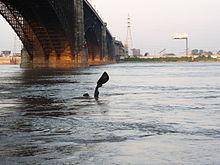
St. Louis lies in the transitional zone between the humid continental climate type and the humid subtropical climate type (Koppen Dfa and Cfa, respectively), with neither large mountains nor large bodies of water to moderate its temperature. It is subject to both cold Arctic air and hot, humid tropical air from the Gulf of Mexico. The city has four distinct seasons. Spring is the wettest season and produces severe weather ranging from tornadoes to winter storms. Summers are hot and humid; temperatures of 90 °F (32 °C) or higher occur 35 to 40 days a year, while days of 100 °F (38 °C) or higher average less than five yearly. Fall is mild with lower humidity and can produce intermittent bouts of heavy rainfall with the first snowflakes usually falling before late mid November. Winters can be cold and snowy with temperatures frequently below freezing. Winter storm systems, such as Alberta Clippers and Panhandle hooks, can bring days of heavy freezing rain, ice pellets, and snowfall.
The average annual temperature recorded at nearby Lambert-St. Louis International Airport, is 57.0 °F (14 °C), and average precipitation is 41.0 inches (1,040 mm). The normal high temperature in July is 89.1 °F (32 °C), and the normal low temperature in January is 23.7 °F ( na5 °C), although this varies from year to year. Both 100 °F (37.8 °C) and 0 °F ( na17.8 °C) temperatures can be seen on an average 2 or 3 days per year. The official record low is na17 °F ( na27 °C) on December 23, 1989, although there were unofficial readings of na23 °F ( na31 °C) on January 29, 1873; and the record high is 115 °F (46 °C) on July 14, 1954. July 2012 was the hottest month in the 138-year recorded weather temperatures in St. Louis history starting in 1874, with an average daily temperature of 88.1 °F (31 °C).
Winter (December through February) is the driest season, with an average 7.5 inches (191 mm) of precipitation. The average seasonal snowfall is 19.6 inches (50 cm). Spring (March through May), is typically the wettest season, with 11.7 inches (297 mm) of precipitation. Dry spells lasting one to two weeks are common during the growing seasons.
St. Louis experiences thunderstorms 48 days a year on average. Especially in the spring, these storms can often be severe, with high winds, large hail and tornadoes. Lying within the hotbed of Tornado Alley, St. Louis reigns as one of the most frequently tornadic metropolitan areas, and has an extensive history of particularly damaging tornadoes.
Some late autumns feature the warm weather known as Indian summer; some years see roses in bloom as late as early December.
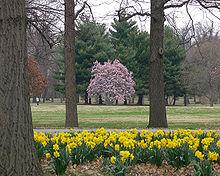
Before the founding of the city, the area was prairie and open forest maintained by burning by Native Americans. Trees are mainly oak, maple, and hickory, similar to the forests of the nearby Ozarks; common understory trees include eastern redbud, serviceberry, and flowering dogwood. Riparian areas are forested with mainly American sycamore. Most of the residential area of the city is planted with large native shade trees. The largest native forest area is found in Forest Park. In Autumn, the changing color of the trees is notable. Most species here are typical of the eastern woodland, although numerous decorative non-native species are found; the most notable invasive species is Japanese honeysuckle, which is actively removed from some parks.
Large mammals found in the city include urbanized coyotes and white-tailed deer. eastern gray squirrel, cottontail rabbit, and other rodents are abundant, as well as the nocturnal Virginia opossum. Large bird species are abundant in parks and include Canada goose, Mallard duck, as well as shorebirds, including the Great Egret and Great Blue Heron. Gulls are common along the Mississippi River; these species typically follow barge traffic. Winter populations of Bald Eagles are found by the Mississippi River around the Chain of Rocks Bridge. The city is on the Mississippi Flyway, used by migrating birds, and has a large variety of small bird species, common to the eastern US. The Eurasian Tree Sparrow, an introduced species, is limited in North America to the counties surrounding St. Louis. Tower Grove Park is a well-known birdwatching area in the city.
Frogs are commonly found in the springtime, especially after extensive wet periods. Common species include the American toad and species of chorus frogs commonly called spring peepers that are found in nearly every pond. Some years have outbreaks of cicadas or ladybugs. Mosquitos and houseflies are common insect nuisances; because of this, windows are nearly universally fitted with screens, and screened-in porches are common in homes of the area. Invasive populations of honeybees have sharply declined in recent years, and numerous native species of pollinator insects have recovered to fill their ecological niche.
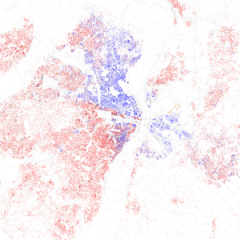
St. Louis grew slowly until the American Civil War, when industrialization and immigration sparked a boom, and it reached its peak population in 1950. That year, the Census Bureau reported St. Louis' population as 82% White and 17.9% African American. After World War II, St. Louis began losing population to the suburbs, first because of increased demand for new housing, and later, white flight.
According to the 2010 United States Census, St. Louis had 319,294 people living in 142,057 households, of which 67,488 households were families. The population density was 5,158.2 people per square mile (1,990.6/km ²). About 24% of the population was 19 or younger, 9% were 20 to 24, 31% were 25 to 44, 25% were 45 to 64, and 11% were 65 or older. The median age was about 34 years.
The population was about 49.2% African American, 43.9% White (42.2% Non-Hispanic White), 2.9% Asian, 0.3% Native American/Alaska Native, and 2.4% reporting two or more races. Hispanic or Latino of any race were 3.5% of the population. The African American population is mostly centered in the north side of the city. Among the Asian American population, the largest ethnic group is Vietnamese (0.9%), followed by Chinese (0.6%) and Asian Indians (0.5%). The Vietnamese community is most prevalent in the Dutchtown neighborhood; Chinese are concentrated in the Central West End. People of Mexican descent are the largest Latino group, and make up 2.2% of St. Louis' population. They have the highest concentration in the Dutchtown and Gravois Park neighborhoods.
In 2000, the median income for a household in the city was $29,156, and the median income for a family was $32,585. Males had a median income of $31,106; females, $26,987. Per capita income was $18,108.
Some 19% of the city's housing units were vacant, and slightly less than half of these were vacant structures not for sale or rent.
In 2010, St. Louis' per-capita rate of online charitable donations and volunteerism were among the highest among major U.S cities.
The 2011 Gross Metropolitan Product (GMP) of St. Louis was $133.1 billion, 21st-highest in the country. According to the 2007 Economic Census, manufacturing in the city conducted nearly $11 billion in business, followed by the health care and social service industry with $3.5 billion, professional or technical services with $3.1 billion, and the retail trade with $2.5 billion. The health care sector was the biggest employer in the area with 34,000 workers, followed by administrative and support jobs, 24,000; manufacturing, 21,000, and food service, 20,000.
The rivers of St. Louis play a large role in moving goods, especially bulk commodities such as grain, coal, salt, and certain chemicals and petroleum products. The Port of St. Louis in 2004 was the third-largest inland port by tonnage in the country, and the 21st-largest of any sort.
As of 2011, the St. Louis area is home to nine Fortune 500 companies, including Express Scripts, Emerson Electric, Monsanto, Reinsurance Group of America, Ameren, Charter Communications, Peabody Energy, Graybar Electric, and Centene.
Other notable corporations from the area include Cassidy Turley, Edward Jones Investments, AT&T Communications, Scottrade, Wells Fargo Advisors (formerly A.G. Edwards), Energizer Holdings, Furniture Brands International, Kerry Group, Post Holdings, Inc., United Van Lines and Mayflower Transit, Ralcorp, Hardee's, and Enterprise Holdings (parent company of several car rental companies). Health care and biotechnology institutions with operations in St. Louis include Pfizer, the Donald Danforth Plant Science Center, the Solae Company, Sigma-Aldrich, and Multidata Systems International. General Motors makes railroad cars in the area, although Chrysler closed its production facility in nearby Fenton, Missouri.
Several once-independent pillars of the local economy have been purchased by other corporations. Among them are Anheuser-Busch, purchased by Belgium-based InBev; McDonnell-Douglas, whose operations are now part of Boeing Defense, Space & Security; Mallinckrodt Incorporated, purchased by Tyco International; and Ralston Purina, now a wholly owned subsidiary of Nestle. The May Department Stores Company (which owned Famous-Barr and Marshall Field's stores) was purchased by Federated Department Stores, which has its regional headquarters in the area.
The Federal Reserve Bank of St. Louis in downtown is one of two federal reserve banks in Missouri.
With its French past and numerous Catholic immigrants in the 19th and 20th centuries, St. Louis is a major center of Roman Catholicism in the United States. St. Louis also boasts the largest Ethical Culture Society in the United States. Several places of worship in the city also are noteworthy, such as the Cathedral Basilica of St. Louis, home of the world's largest mosaic installation. Other locally notable churches include the Basilica of St. Louis, King of France, the oldest Roman Catholic cathedral west of the Mississippi River and the oldest church in St. Louis, the St. Louis Abbey, whose distinctive architectural style garnered multiple awards at the time of its completion in 1962, and St. Francis de Sales Oratory, a neo-Gothic church completed in 1908 and the second largest church in the city.
Unique city and regional cuisine includes toasted ravioli, gooey butter cake, Provel cheese, the slinger, the Gerber sandwich, the St. Paul sandwich, and St. Louis style pizza.
St. Louis is home to professional Major League Baseball, National Football League, and National Hockey League teams, notable collegiate-level soccer teams, and has hosted several collegiate sports tournaments.
The St. Louis Cardinals, one of the oldest franchises in Major League Baseball, have accumulated 11 World Series titles, with the most recent being in 2011, and two minor league baseball teams play in the area, the Gateway Grizzlies and the River City Rascals. The St. Louis Rams, an American football NFL team, play at the Edward Jones Dome and have won one Super Bowl championship. The St. Louis Blues, a franchise of the National Hockey League, play at the Scottrade Center, and the region hosts NHRA drag racing and NASCAR events at the Gateway International Raceway in Madison, Illinois.
At the collegiate level, St. Louis has hosted the Final Four of both the women's and men's college basketball NCAA Division I championship tournaments, and the Frozen Four collegiate ice hockey tournament. Although the area does not support a National Basketball Association team, it hosts an American Basketball Association team called the St. Louis Phoenix. St. Louis University has won 10 NCAA Men's Soccer Championships, and the city has hosted the College Cup several times. In addition to collegiate soccer, St. Louisans have played for the United States men's national soccer team, and 20 St. Louisans have been elected into the National Soccer Hall of Fame. St. Louis also is the origin of the sport of corkball, a type of baseball in which there is no base running.
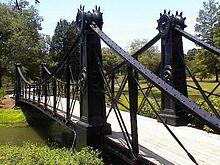
The city operates more than 100 parks, with amenities that include sports facilities, playgrounds, concert areas, picnic areas, and lakes. Forest Park, located on the western edge of city, is the largest park in the city, although it is not the largest park in the region. Another significant park in the city is the Jefferson National Expansion Memorial, a National Memorial located on the riverfront in downtown St. Louis. The centerpiece of the park is the 630 feet (192 m) tall Gateway Arch, designed by noted architect Eero Saarinen and completed on October 28, 1965. Also part of the park is the Old Courthouse, where the first two trials of Dred Scott v. Sandford were held in 1847 and 1850.
Other notable parks in the city include the Missouri Botanical Garden, Tower Grove Park, and Citygarden. The Missouri Botanical Garden, a private garden and botanical research facility, includes the Climatron, a greenhouse built as a geodesic dome. Immediately south of the Missouri Botanical Garden is Tower Grove Park, a gift to the City by Henry Shaw. Citygarden is an urban sculpture park located in downtown St. Louis, with art from Fernand Leger, Aristide Maillol, Julian Opie, Tom Otterness, Niki de Saint Phalle, and Mark di Suvero. The park is also divided into three sections, each of which represent a different theme: river bluffs; flood plains; and urban gardens. The park also has a restaurant ae The Terrace View. Another downtown sculpture park is the Serra Sculpture Park, with the 1982 Richard Serra sculpture Twain.
The city of St. Louis has a mayor-council government with legislative authority vested in the Board of Aldermen of the City of St. Louis and with executive authority in the Mayor of St. Louis and six other separately elected officials. The Board of Aldermen is made up of 28 members (one elected from each of the city's wards) plus a board president who is elected city-wide. The 2012 city budget is $938 million. It is scheduled to rise to $966 million in 2013. 239,247 registered voters lived in the city in 2010, down from 257,442 in 2008.
Municipal elections in St. Louis city are held in odd numbered years, with the primary elections in March and the general election in April. The mayor is elected in odd numbered years following the United States Presidential Election, as are the aldermen representing odd-numbered wards. The President of the Board of Aldermen and the aldermen from even-numbered wards are elected in the off-years. The Democratic Party has dominated St. Louis city politics for decades. The city has not had a Republican mayor since 1949 and the last time a Republican was elected to another city-wide office was in the 1970s. As of 2006, 27 of the city's 28 Aldermen are Democrats.
Although St. Louis City and County separated in 1876, some mechanisms have been put in place for joint funding management and funding of regional assets. The St. Louis Zoo-Museum district collects property taxes from residents of both St. Louis City and County and the funds are used to support cultural institutions including the St. Louis Zoo, St. Louis Art Museum and the Missouri Botanical Gardens. Similarly, the Metropolitan Sewer District provides sanitary and storm sewer service to the city and much of St. Louis County. The Bi-State Development Agency (now known as Metro) runs the region's MetroLink light rail system and bus system.
The city of St. Louis is represented by eleven districts in the Missouri House of Representatives: the 57th, 58th, 59th, 60th, 61st, 63rd, 65th, 67th and 108th are entirely within the city limits, while the 64th and 66th include part of the city and part of St. Louis County. Two Missouri State Senate districts, the 4th and 5th, are entirely within the city, while the 1st Senate district includes part of the city and part of St. Louis County.
The City of St. Louis is split roughly in half north to south by Missouri's 1st and 3rd U.S. Congressional districts. The 1st is represented by Lacy Clay and the 3rd by Russ Carnahan. Both are members of the Democratic Party; a Republican has not represented a significant portion of St. Louis in the U.S. House since 1949. Each district also includes a significant portion of St. Louis County. Both the city and county lost population in the 2010 Census which contributed to Missouri losing a Congressional seat effective 2013. Initial redistricting maps indicate that the 3rd district would be absorbed into the 1st district placing Carnahan and Clay in the same district and giving St. Louis only one representative in Congress.
The United States Court of Appeals for the Eighth Circuit and the United States District Court for the Eastern District of Missouri are based in the Thomas F. Eagleton United States Courthouse in downtown St. Louis. St. Louis is also home to a Federal Reserve System branch, the Federal Reserve Bank of St. Louis. The National Geospatial-Intelligence Agency (NGA) also maintains major facilities in the St. Louis area.
Since the mid 1990s, St. Louis index crime rates have declined, although homicide rates in the city of St. Louis have remained higher than the United States national average. St. Louis also frequently is ranked among the "most dangerous" in the country by CQ Press, although these rankings are controversial and do not reflect the crime rate of Greater St. Louis.
The St. Louis Public Schools serves the city of St. Louis with 77 schools, and it is run by a state appointed board. With more than 25,000 students, the district is the largest in Greater St. Louis. The city of St. Louis has several private high schools, both secular and religiously affiliated, including numerous Catholic and Lutheran schools.
According to the Carnegie Classification of Institutions of Higher Education, the city of St. Louis is home to two national research universities: Washington University in St. Louis and St. Louis University.
Greater St. Louis commands the 21st largest media market in the United States, a position it has held with little variation for more than ten years. All of the major U.S. television networks have affiliates in St. Louis, including KTVI 2 (Fox), KMOV 4 (CBS), KSDK 5 (NBC), KETC 9 (PBS), KPLR-TV 11 (CW), KDNL 30 (ABC), WRBU 46 (MNTV), and WPXS 51 Daystar Television Network. Among the most popular radio stations in the St. Louis area are KMOX (AM sports and talk), KLOU (FM oldies), WIL-FM (FM country), WARH (FM adult hits), and KSLZ (FM top 40 mainstream). St. Louis also supports public radio with KWMU, an NPR affiliate, and community radio with KDHX. All-sports stations, such as KFNS 590 AM "The Fan", WXOS "101.1 ESPN", and KSLG are also popular in St. Louis.
The St. Louis Post-Dispatch is the region's major daily newspaper. Other newspapers in the region include the Suburban Journals, serving parts of St. Louis County, while the primary alternative newspaper is the Riverfront Times. Three weeklies serve the African-American community: the St. Louis Argus, the St. Louis American, and the St. Louis Sentinel. St. Louis Magazine, a local monthly magazine, covers topics such as local history, cuisine, and lifestyles, while the weekly St. Louis Business Journal provides coverage of regional business news. St. Louis is also home to the nation's last remaining metropolitan journalism review, the Gateway Journalism Review, based at Webster University in the suburb of Webster Groves. Furthermore, St. Louis is served by an online newspaper, the St. Louis Beacon, which operates in partnership and shares facilities with KETC 9 TV.
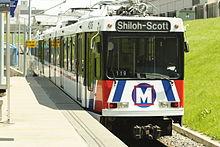
The city of St. Louis is served by four interstates and several U.S. highways and state roadways. Although there are no airports within the city limits, the city owns and operates Lambert-St. Louis International Airport, located in northwest St. Louis County. Freight rail and passenger rail service operate in the city on tracks owned by BNSF Railway, with passenger service provided by Amtrak and served at the Gateway Multimodal Transportation Center in downtown St. Louis. Bus service, light rail, and paratransit service in the city is provided by the Bi-State Development Agency, also known as Metro. St. Louis also maintains a port authority for river shipping, and taxicabs are regulated within the city.
St. Louis is a center of medicine and biotechnology. The Washington University School of Medicine is affiliated with Barnes-Jewish Hospital, the fifth largest hospital in the world, and the two institutions operate the Alvin J. Siteman Cancer Center. The School of Medicine also is affiliated with St. Louis Children's Hospital, one of the country's top pediatric hospitals. Both hospitals are owned by BJC HealthCare. The school's Genome Sequencing Center played a major role in the Human Genome Project. St. Louis University Medical School is affiliated with Tenet Healthcare's St. Louis University Hospitasl and SSM Health Care's Cardinal Glennon Children's Hospital. It also has a cancer center, vaccine research center and a bioethics institute. Several different organizations operate hospitals in the area, including BJC HealthCare, SSM Health Care, Tenet and St. John's Mercy Healthcare.


St. Louis possesses several significant examples of 19th century architecture, such as the early stone construction Emmanuel DeHodiamont House, the Greek Revival style Chatillon-DeMenil House in the Soulard neighborhood, the Victorian era Campbell House, and the Wainwright Building, an early Louis Sullivan skyscraper. The city is divided into 79 government-designated neighborhoods. The neighborhood divisions have no legal standing, although some neighborhood associations administer grants or hold veto power over historic-district development.
St. Louis has 15 sister cities.

Word Count: 5789





